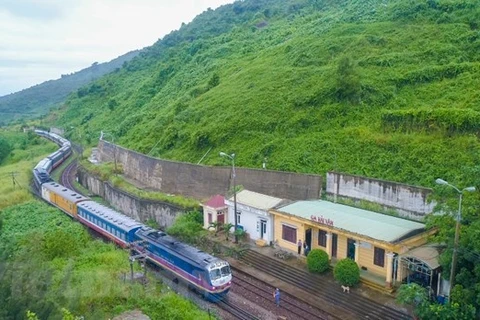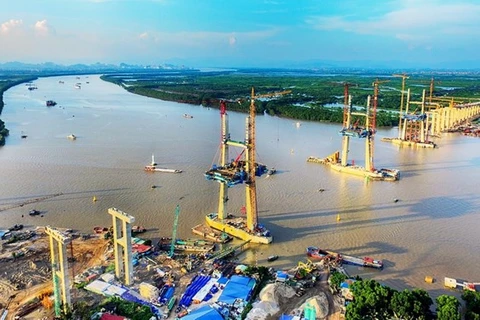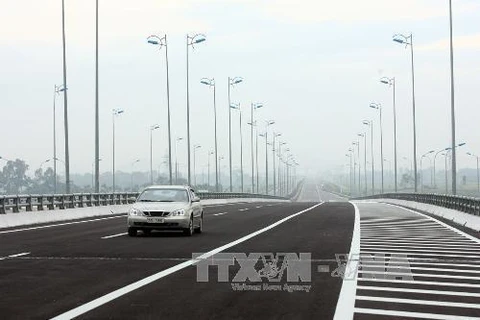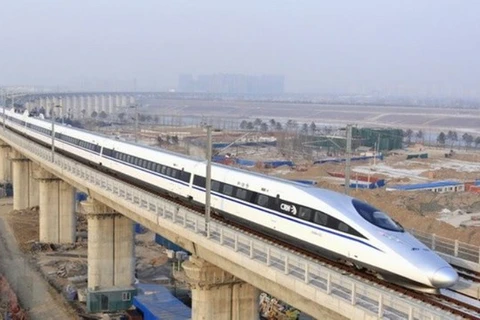Hanoi (VNA) - A lot of options have been proposed to select investors for the North-South express railway project, which is expected to help strengthen the nation’s transport capacity and socio-economic development.
However, the biggest obstacle in implementing the project lies in the fact that if the investment is too large, other projects in this field will have to wait for investment.
Earlier, the Ministry of Transport had proposed the Government implement the project under the scenario that the North-South express railway will have a total length of 1,559km and a width of 1,435mm and include 24 stations, five depots, and 42 infrastructure maintenance facilities.
The railway will allow a maximum designed speed of 350km per hour. The total investment is projected at over 1.34 quadrillion VND (58.7 billion USD), 80 percent of which are from the State capital and the remainder from the private capital.
The transport ministry divides the project into two phases: the Hanoi-Vinh and the Nha Trang-Ho Chi Minh City sections will be carried out from 2020 to 2032, while the Vinh-Nha Trang section will be implemented from 2032 to 2050.
Through the experience of other countries worldwide, the Ministry of Planning and Investment realised that it is necessary to invest in a new high-speed railway on the backbone of the North-South axis to play a leading role in promoting socio-economic development.
According to the ministry, the project should basically meet the demand of transporting a large volume of goods and passengers.
Consultancy agencies commented that the investment for building a railway with a maximum speed of 200km per hour will be 10 percent lower than that of 350km per hour.
The selection of the maximum speed at 350km per hour (mainly in Japan and France) is able to compete with the aviation sector and bring operational efficiency and reasonable market shares among the means of transport. However, according to the Ministry of Planning and Investment, such a railway is only suitable for passenger trains, not cargo.
Furthermore, the proposal by the Ministry of Transport could pose a lot of risks, adversely affecting the development investment capital, experts said, adding that if investment is poured into the project, it is likely that investment in other transport infrastructure works will be delayed to build the North-South expressway for 30 years or more.
According to a report by the ministry, after the conclusion of the first phase, the Hanoi-Vinh and the Nha Trang-Ho Chi Minh City sections will be able to serve 364,000 passengers per day while the number of passengers travelling on these routes is forecast at only 55,000-58,000 per day by 2035. Therefore, the investment right in the first phase is redundant and wasteful, experts said.
To ensure the feasibility and efficiency of the project, experts suggested the North-South express railway should be designed with the operating speed of 160-200km per hour, and the total investment should be about 26 billion USD (over 30 billion USD less than the total investment estimated by the Ministry of Transport).
This option is also suitable to the direction by the Prime Minister on reducing social investment and transportation costs as well as ensuring of the harmony of resources to develop other transport projects, according to experts.
To have better and more reasonable options, the Ministry of Planning and Investment proposed the Government set up a council to appraise the pre-feasibility study report of the project.
If the North – South express railway is built, it will cut down the time needed to travel from Hanoi to Ho Chi Minh City to nearly seven hours, thus easing pressure on road transport, reducing traffic accidents, improving national competitiveness and facilitating transport activities./.

























